I damn near didn’t stop. I was driving a road that I rarely traveled, enroute to another piece of cover. It was a crisp, clear day towards the end of October, the kind of day you see in your mind’s eye when you dream about grouse and woodcock hunting. The leaves were mostly down; the air held enough of a bite to make you briefly consider adding another layer of clothing (a decision you knew you’d come to regret). My black-and-tan English cocker, Rumor, and I had hunted two covers, both reliable producers, and had one woodcock in the bag to show for our efforts.
Hunting the second of those covers had put us out on a bit of a geographic limb, which explains why we found ourselves on this particular road. It’s a pretty drive, with lots of classic Northwoods scenery—skyscraping pines, oaks in their seasonal bonnets of maroon—but precious little, historically, of the scratchy, scruffy-looking stuff that turns a bird hunter’s head. But then, glancing left through a park-like expanse of mature sugar maples, I caught a glimpse of something tantalizing: the pale-gray calligraphy that signals a stand of slender young aspens—“popple,” in the vernacular of the North Country.
I slowed down, hoping for what my great friend Andy Cook and I refer to as a clarifier—a piece of information that’d tell me whether what I was looking at was just a random patch of popple or a piece of cover big enough to be worth hunting. But a glimpse was all I could get—like a woman’s face across a crowded room—and I was about to drive on when I thought to myself You dumbass, this is the reason you got a cocker.
Meaning a dog that, unlike the pointers and English setters I’d always had in the past, I could deploy quickly, steer precisely, and use to hunt even postage stamp-sized covers with a low degree of fuss. And—in theory, anyway—a high degree of efficiency.
I heeled Rumor through the open maples, easy walking save for the occasional tub-sized boulder or blowdown limb. The latticed branches overhead cracked the sky into shards of blue. Nearing the aspens, I saw that the portion visible from the road was just the very tip of a long, narrow cut that followed the floor of a shallow valley. I saw, too, that there was plenty of the brushy understory—spiky blackberry canes, bristling hazel—that screams Birds! to us graybeards who’ve worn out more than a few pairs of boots stumbling around in the woods.
“Rumor, hup,” I said. She sat—barely—her dark eyes locked on me like the mouths of turreted guns, her entire body quivering as if it were about to fly apart.
More Like This
“Hie on.” At that, the signal to hunt the cover, she tore into the thick stuff, ears flying, legs churning, stub tail a blur. I followed, trying to keep one eye on my hyperkinetic little dog and one on where I was going. After years of hunting with pointing dogs, which allows you the luxury of relaxing your focus somewhat until they actually go on point, I had to reprogram myself to stay on high alert and be ready for a flush at literally any moment.
Fifty yards or so into the cover, Rumor wheeled, darted to her right, and bounced a woodcock. The bird flushed hard and rocketed over my head, forcing me to do a hasty one-eighty in order to keep my muzzles on it. Thankfully I stayed upright, and when I pulled the front trigger the bird folded and fell.
“Rumor.” She’d hupped at the flush, and now, released for the retrieve by the sound of her name, she raced in the direction of the fall. Before she got there, though, she popped another woodcock. This time I had no shot; still, it was beginning to dawn on me that I might have discovered a woodcock honey hole. Sweet …
It took Rumor several minutes to locate the dead bird; she hadn’t gotten a good mark in the thickly ranked aspens (neither had I, for that matter), but I had every confidence that if I kept her in the general area with the Hie-loss command—the spaniel world’s equivalent of Hunt dead—she’d eventually come up with it. Which she did, delivering it to hand as thrillingly fast as her legs would go.
A few of my setters were top-notch retrievers. Emmylou was close to letter-perfect in this regard; Butch seemed to enjoy retrieving birds as much or more than pointing them; and while Tina didn’t always do things by the book she had few peers when it came to pure “game recovery.” But I’ve never had a dog that simply loves to retrieve as much as Rumor does—or one that exudes so much sheer, unbridled joy in the act of doing it.
I pocketed the woodcock, gave Rumor a squirt of water, then sent her back into the cover. Before I really knew what was happening she’d put up another woodcock, this one a hurtling right-to-left crosser. I made a torquing reflex swing and somehow caught up with it. Rumor’s mark was unerring, and just like that I had my three-bird limit. Time was when I would have pushed out the rest of the cutting, hoping for a crack at a grouse; but with grouse only slightly rarer than gryphons these days, at least in our neck of the woods, I decided to call it a morning.
Besides, I had plenty to be grateful for. And what was ultimately more gratifying than the birds themselves was knowing that I’d pioneered a new cover—a cover that in the near future was only going to get better and that would remain productive for another eight-to-ten years. For grouse and woodcock hunters, finding new cover is like adding a blue-chip stock to your portfolio for the price of a little sweat equity. It makes you feel rich.
Plus, unlike the places where other gamebirds are found, grouse and woodcock cover tends not to get plowed, pastured, paved, drilled, drained, subdivided, or otherwise rendered unfit for habitation. What it does do is decline over time, gradually transitioning from brushy successional forest (good) to mature climax forest (not good).
This is why it’s so important to continually discover new spots and not simply return, time and time again, to a handful of “old reliables.” The legendary grouse guru Tom Prawdzik always contended that if there was one area in which the “average” grouse hunter had room to improve, this was it. Prawdzik himself was one of the first to recognize the utility of GoogleEarth and similar satellite imagery programs in this regard, although he knew as well as anyone that the only way to really vet a piece of cover is the same as it’s always been: by putting your boots on the ground there.
As it happened, just the previous afternoon Rumor and I had found a new cover that was much bigger—the kind you could spend a couple hours in, easy—and so remote that I had the distinct impression it received little if any hunting pressure. It held grouse, too, a couple of which, mostly thanks to Rumor, ended up in the bag.
I can hardly wait until October.




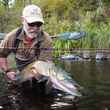
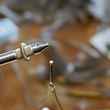

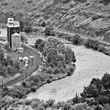



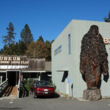
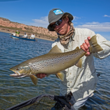



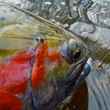
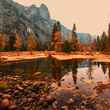




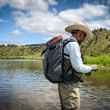



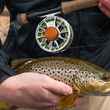
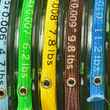



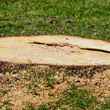

Comments